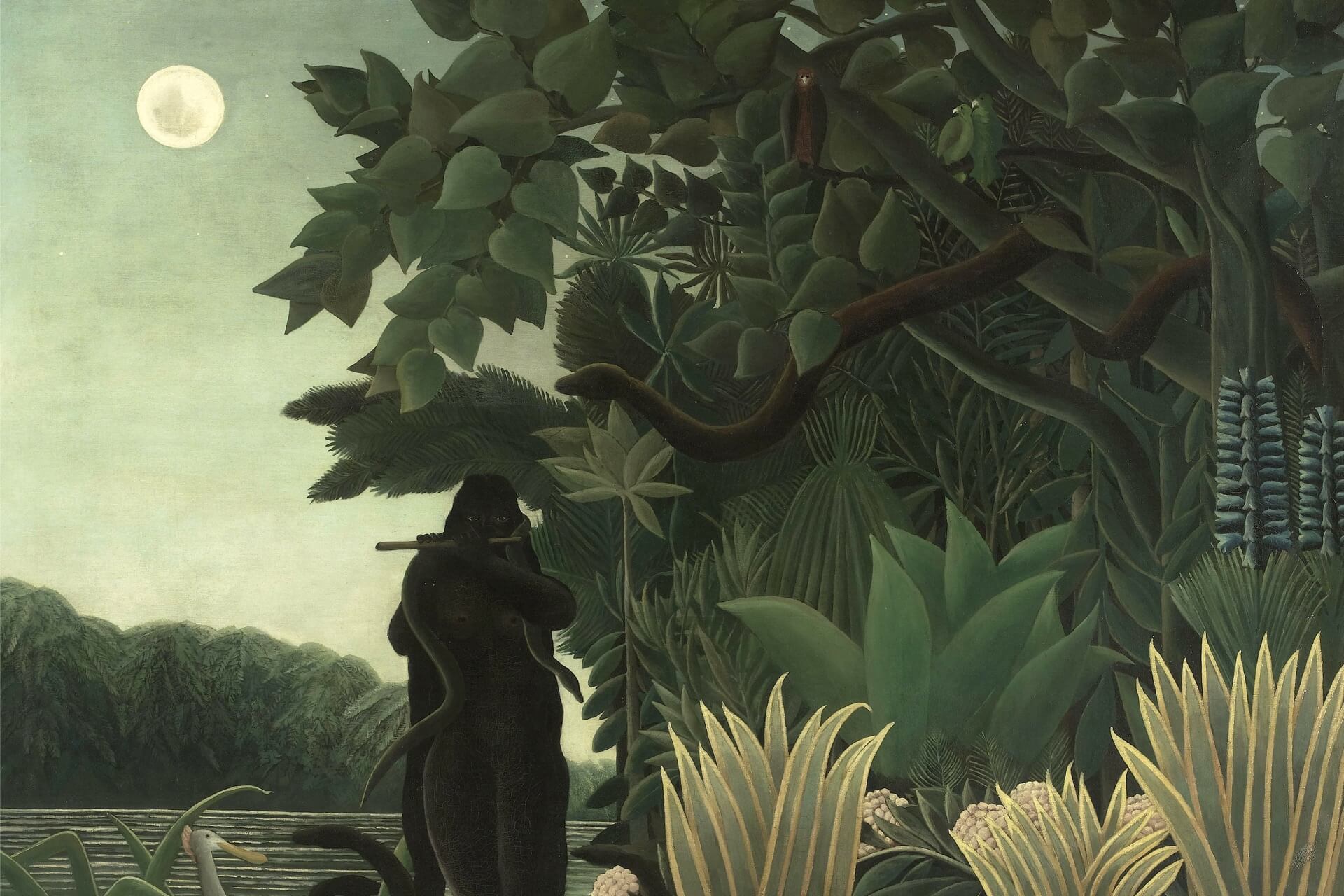Sep 26, 2023 Society
Was there ever a time that we yearned to know what the weather is going to send our way as much as we do now? The past few months have been a time of terror, destruction and death — and that’s just the beginning. Never has Auckland had such a terrible pummelling by the forces of nature.
Seemingly out of nowhere, rain poured down with biblical rage. A cyclone with a devil’s tail spun around the isthmus, dealing to cliffside houses and Auckland’s west coast. Down came homes in an avalanche of mud, slush and debris. Lives were lost. Insurance claims drag on and the clean-up is ongoing. The trauma will last for years.
I’m sitting in the garage of Ken Ring, New Zealand’s most notorious predictor of weather and earthquakes. As a former mayor of Waitākere, I’ve known Ring for as long as I can remember — he’s a Titirangi local celebrity. Ring has played with the famed Hamilton County Bluegrass Band, been on TV teaching maths with magic, and then made his name telling the world when the next quake would hit or storm blow in. The sun-filled garage is full of his life’s treasures. The walls are lined with books, the odd telescope and other strange instruments of his trade — the stuff a weather predictor needs. Sitting down to talk to Ring feels a little like meeting with Gandalf.
These days, Ring is a little slower than the one-man weather system he used to be. He’s had a serious stroke, which left him debilitated. This has slowed his writing — the weekly weather forecasts, the fishing guides (extraordinarily accurate, according to some) and the advice on when to plant and harvest. But Ring hasn’t lost his magical qualities or his aura of being a keeper of ancient knowledge. Even those who prefer their forecasts from a more conventional source may be receptive to his message today — that it’s time to be very, very wary of what’s coming down the track.
Ring’s more recent renown (or infamy) rests on his prophecies after the Christchurch earthquake of September 2010. Ring claims to have correctly predicted that quake and also the horrific shake of 22 February 2011, which devastated the city and in which 185 people lost their lives. The moon was full on 18 February, and Ring had suggested the quake risk would be high in the days around it. For this he received both acclaim and derision.
For months, Ring had also been predicting a heightened risk of quakes or other extreme events on 20 March — the date of the next full moon, which would also be at perigee, the point at which the moon in its orbit is closest to earth. Ring’s suggestion that people should leave Christchurch to avoid disaster sent its own shockwaves through the community. On the day itself, the New Zealand Skeptics Society pointedly hosted a celebrity-studded lunch at a cafe on the top of the Port Hills. Later that evening the city received its biggest aftershock since 22 February — a 5.1 magnitude tremor at 9.47pm.
Critics would say that it’s easy to predict there will be quakes during a months-long swarm of expected aftershocks, and that Ring’s forecasts always left wriggle room for changing the story after the fact, but Ring is unbowed. Now, after the latest round of disasters hitting Aotearoa with astronomical intensity, Ring says his ideas are more important than ever and that the sceptics, including weather meteorologists, are “eating their words”.
Ken Ring was born in England during World War II — his pregnant mother had been evacuated from London to the safety of the English countryside. His father, Leonard Ring, a bodybuilder and wrestler, taught commando skills to soldiers. (Ken has certainly inherited his father’s muscular physique; he’s short and immensely strong.) After the family moved to New Zealand in the 1960s, Leonard trained as a physiotherapist then became a TV personality in the 1980s — the man who taught New Zealanders to bend their knees and not use their back like a crane. It’s still remembered as a milestone campaign for ACC.
The young Ken Ring went to medical school and teachers’ training college, but soon lost interest in the world of academia. Instead, he hit the road in his painted house bus and lived the hippy lifestyle with wife Judy and baby Kerry. It was a happy life — camping on beaches, looking at waves and soaking up surf breaks. It was during these long summer days that Ring first noticed how the sea’s tidal forces were influenced by the moon in its phases. Within a year he was filling a diary with personal observations about how tide and weather patterns change depending on the moon’s closeness and distance from the earth. He was developing his own ideas, ones which challenged established prediction practices.
The science of weather forecasting has a complex history. One of the most prominent early forecasters was Captain Robert FitzRoy, who sailed with Charles Darwin on the five-year survey voyage of the Beagle and then became an unpopular governor of New Zealand before being recalled in 1845. Back in Great Britain, FitzRoy was appointed as the head of a new weather office by the lords of the admiralty in 1854. His role was to gather meteorological information from which patterns could be traced for the benefit of the Royal Navy. FitzRoy was a better weather forecaster than a governor. The telegraph had just been invented so forecasts could now be distributed long distances. Helped by his friendship with Darwin and other scientists of the Royal Society, FitzRoy started to form theories about what influenced the weather and how it could be predicted in advance, experimenting with barometers and storm glasses and setting up a system of gale warnings for sailors and fishermen. He was, however, dubious about lunar forecasting and did not believe weather was related to the position of the planets and the moon. Unfortunately, FitzRoy’s weather predictions fell short of what the admiralty thought they should be getting. He fell out with his colleagues and the fledgling Meteorological Office. Dogged by depression and health issues, Fitzroy saw only one way out and took it, slitting his own throat with a razor. A very bad weather day for him.
Ring was determined not to follow in FitzRoy’s footsteps — he wanted to explore lunar forecasting properly and had no intention of falling into despair. What had been missing, Ring considered, was a link to the theory of gravity and gravitational attraction formulated by the great thinker Isaac Newton. Satellites like the moon and even planets, he believed, could be at the heart of atmospheric conditions on Earth. In this he built on the ideas of earlier thinkers. George Darwin, son of Charles, believed that the moon had once been part of the earth and was pulled free by centrifugal force millions of years ago to form a satellite (not a theory that scientists subscribe to today). Darwin also explored the role of tidal force in celestial mechanics and was, Ring thinks, getting close to understanding the source of the world’s storms and earthquakes. Ring picked up the idea, considering that the moon’s gravitational attraction might have a greater bearing than had been recognised before. He was determined to use these ideas to improve the science of predicting weather and disasters.
Although the moon appears to move around the earth daily, with its rise and set, this is simply an illusion. The earth rotates on its axis once every 24 hours, while the moon gently moves in its 27.3-day orbit around the earth. At the same time, the earth and moon together orbit our fiery source of energy, the sun, moving along with the other planets in the solar system around an imaginary plane called the ecliptic. All of these interactions have traceable effects on our land, seas and atmosphere, Ring explains. He believes that the magnetic moon’s attraction to powerful forces within the core of the earth is what creates havoc on the surface of the planet.
Our earth: a giant ball 2000km wide. Down under our feet 5200km below (humans have drilled down a mere 12km) is a solid, magnetic inner core. That makes one hell of a large magnet, and the moon is the same. These two magnets, as any kid will tell you, create a force of tension and pressure. The moon-magnet causes two bulges of water on the earth — one close to the moon, the other on the opposite side — which we experience as tides coming in and out as the Earth turns. Ring notes that the English word ‘tide’ comes from Indo-European words meaning ‘time’ and ‘to divide’. He believes that pre-modern civilisations had a deep understanding of lunar phases and their effect on the earth.
In the 1970s, beginning to keep his moon diaries and living on the North Island’s east coast in his housebus, Ring met local Māori and learned about their world. As he shared fishing experiences with these new acquaintances, he learned that Māori had a traditional fishing calendar based on the moon. They knew its intimate cycles and were guided by its position not only for fishing but also for the timing of crop cultivation like planting, pruning and harvesting.
Over five years, Ring filled pages with graphs and notes. He saw patterns in the data’s complexity — clear cycles of lunar weeks and months repeated again and again. When the moon was closest to Earth, in perigee, winds blew stronger, waves lifted higher and fierce storms arrived. Two weeks later came apogee, when the moon is furthest away from the earth. These two points of orbit have enormous importance in Ring’s lunar weather predictions. In addition, Ring developed theories about how longer solar and lunar cycles affect the weather. The solar magnetic activity cycle is a phenomenon first discovered in 1843 in which the magnetic field of the sun undergoes a ‘flip’ every 11 years. Ring says there is also a lunar cycle — as the lunar year is 10 days shorter than the solar year, he explains, it takes almost two decades for the moon’s phases to cycle back around again to match our calendar and a similar year’s weather to recur.
Drawing on his records of observations, Ring’s weather almanacs began to take shape. He published his first in 1999 and they became yearly bestsellers. They also brought Ring public prominence and sometimes clashes with those who doubted his expertise and disputed his conclusions. Ring is also a climate change denier; he believes that Aotearoa’s climate has not changed for thousands of years. He justifies this belief with his own studies of rainfall, floods and the landscape, which, examined with a careful eye, can be a dossier for rainfall history, he says. Ring believes passionately that pollution — carbon, methane or otherwise — has nothing to do with weather. Instead, weather is the tide of the atmosphere, he says, and a similar tidal pressure on the earth’s crust can trigger earthquakes.
The atmospheric tides can create curious effects. After the new moon period, Ring contends, there is more oxygen available at higher altitudes. Ring cites as evidence for this theory the experiences of Sir Edmund Hillary. According to Ring, Sir Ed had many discussions with fellow mountaineers about why they might experience open lungs at altitudes as high as 16,000 feet on some days but not others. Hillary knew sherpas in the Himalayas who had made multiple ascents without the help of supplemental oxygen, usually a rare feat. The variations of oxygen levels Hillary and the sherpas had observed, Ring believes, relate to the phases of the moon.
If the moon’s push and pull have such clear influences on the sea, the land, the sky, what else might these lunar effects work on? The answer is us — after all, more than half of our bodies are water. I recall as mayor that on a full moon the phones at the council would run hot. Every grumpy ratepayer would take their anger and eccentricity out on council staff. My wife, a very clever midwife, recalls that waters would always burst on a full moon. Ask any rest home nurse about full moon week — it’s not for the faint-hearted. All this grief and all these problems are caused, Ring believes, by the relationship between the Earth’s deep core and the floating moon in our evening sky. It’s the pull of the serene moon that creates the chaos.
I study my brand-new 2023 New Zealand Weather Almanac. Although Ring is hampered by his stroke, he fought back and adjusted his speech patterns so he could dictate his books using voice-activated technology. (He does a remarkable Australian accent which seems to work particularly well with the Dragon speech recognition software.) With this help, he was able to deliver a resoundingly large 340-page manual on New Zealand weather this year. It includes a daily earthquake diary and detailed weather predictions based on Ring’s interpretations of the moon and sun cycles. The solar cycle averages between 11 and 12 years. The moon cycles are around 17 to 19 years — Ring uses them to develop predictions for the gardening guide; if you wanted to take things further, you could probably consult them for when to trim your beard. In Ring’s book, very many of the daily forces affecting humans are caused and overseen by the moon and its phases.
As I talk with Ring, I realise how deeply he has been affected by his recent stroke. His once-strong body has failed him — the stroke confined him to a wheelchair and affected his speech. His wife Judy has passed away; his daughter Miri lives close by and tends to his needs. He is no longer able to drive. He can paint and draw with his working hand, though, and his art shows real talent for portraits. He has also kept his sense of humour, but like many stroke survivors he has moments when, recalling the past, he’s close to breaking down.
The garage of treasures is full of this past — especially the books, which include his own more-than-20 published titles. Ring was certainly always media savvy. His articles for more than 30 years appeared in newspapers and magazines; he appeared for two decades on early television. And Ring’s roadshow to schools as a ‘mathman’ with magic tricks got kids interested not only in maths but in the vast universe above us.
These days his energy is focused on defending his prophecies and predictions — he has plenty of critics and competitors. Weather forecasters now provide satellite images seven days out, and the dancing Dan Corbett who does the weather on 1 News is a magnetic personality. I point out to Ring that most newspapers still for inexplicable reasons print horoscopes each day, so alternative weather predictions should follow without comment.
I initially visited Ken Ring with a sceptical mind, but I became a believer of sorts. Once I started in on tracing the astronomical cycles and carefully studied his almanac, open to being convinced, I became absolutely lost in the lunar pull. Reading the book, the moon takes on a new meaning in your life. You are suddenly hyper-aware that El Niño should not be taken lightly. And in the dark and troubled weather-related months and years we no doubt have ahead, I will remember to pay homage to this out-of-the-box thinker, the Merlin of the moon.
However, as I pore through the impressive New Zealand Weather Almanac for 2023 with its “essential predictions for farmers, fishermen and gardeners” (says the cover), I note that the charts for January and February do not reveal the weather hell we endured. On 10 February, as Cyclone Gabrielle bore down on us and the MetService was issuing heavy rain and strong wind watches for the upper North Island, Ring told followers on his Facebook page to be careful, but also said dismissively, “We will wake up [on Tuesday, 14 February] to the whimpering of showers and declare that all the fuss was for nothing and the event was a fizzer.” Even Nostradamus got a few things wrong.
–






